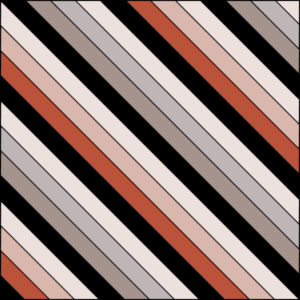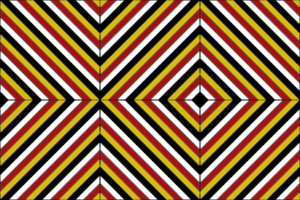I am reverting this week to publishing the geometric mosaic models I have been drawing for the past year !
A geometric mosaic medallion from Daphne
The mosaic model of this week 20 (May 19 to 25) is a drawing (actually a set of drawings) I made of an intricate medallion from Daphne, a wealthy suburb of the ancient Antioch on the Orontes in Turkey

This mosaic is an other excellent example of the modular design concepts used by ancient mosaicists. It is a combination of 6 individual patterns arranged on an octagonal structure (2 of the individual patterns are used twice)
The octagonal structure :

6 patterns fill 8 hollow spaces.
Diagonal layers


Basic Cubes trompe-l’oeil


Hollow cubes Trompe-l’oeil


Impossible cubes trompe-l’oeil
A unique combination of flat patterns


4 layers Solomon knot
Modular construction
Those 6 squares are part of a sort of geometric mosaic vocabulary spoken by most mosaicists of those times. The genius of our ancestors is that those designs could be used in many different ways. In Daphne, to fill up blank spaces of a more intricate structure (the octagonal shape). Squares #1 and 2 were used twice for the whole mosaic. They could be used in 2 different ways :
- Traced on the floor so the mosaicist would build them right on the actual floor to be covered
- Built beforehand by different craftsmen in a workshop, possibly far away from the actual floor to be covered, then transferred to it to fill up the blanks of the main mosaic built by different craftsmen.
An other interesting aspect of this concept is the possibility to combine some of those basic squares by translation to create huge geometric mosaic rugs.


The complete Daphne square
Here also I created 2 versions, Black and White and colored of the mosaic.


I believe antic mosaicists and painters used catalogs of patterns like the ones I am drawing. They had to do so for 2 reasons :
- to show them to their patrons so they could chose from them patterns they liked to decorate their floors and walls,
- for themselves to build the actual mosaics, or subcontract realization of specific parts from specialized workshops.
A great diversity of patterns composed a sort of lingua franca of mosaics. Some words or patterns, such as the solomon knot, were common to all mosaicists, others were locals, but could at times be borrowed by other mosaicists and when appreciated could become part of the mainstream.
Many figurative themes and decorative patterns of ancient mosaics were already used by Greek vases painters. The Genius of Roman mosaicists was the way they systemized and standardized the language to allow them to cover very wide surfaces. After all, the Roman Empire was many many times bigger than the original Greek world. The Romans had a lot more mosaics to build than the Greeks ever had vases to paint.
You are welcome to use my drawings for your own creations
I built those drawings using the 2 pieces of software GIMP and Inkscape which you can freely download and use.
I can draw mosaics because some guys develop and maintain programs that are free to download and use. These people work hard at this because they love to share, I admire that. And I will share my drawings with you. You are free to copy and use them for any graphic project, mosaic, painting, quilting…
If you do so, it would be nice to mention their provenance, but you do not have to. I would also be glad to know how you used them !
If you need higher resolution of them, please contact me
Stay tuned for the next patterns… And many more ! I am currently publishing 50 models from the great geometric mosaic of Lugdunum. as well as models of figurative mosaics, many of them from Qasr el Libya.
you can check on previous geometric medallions here :

















